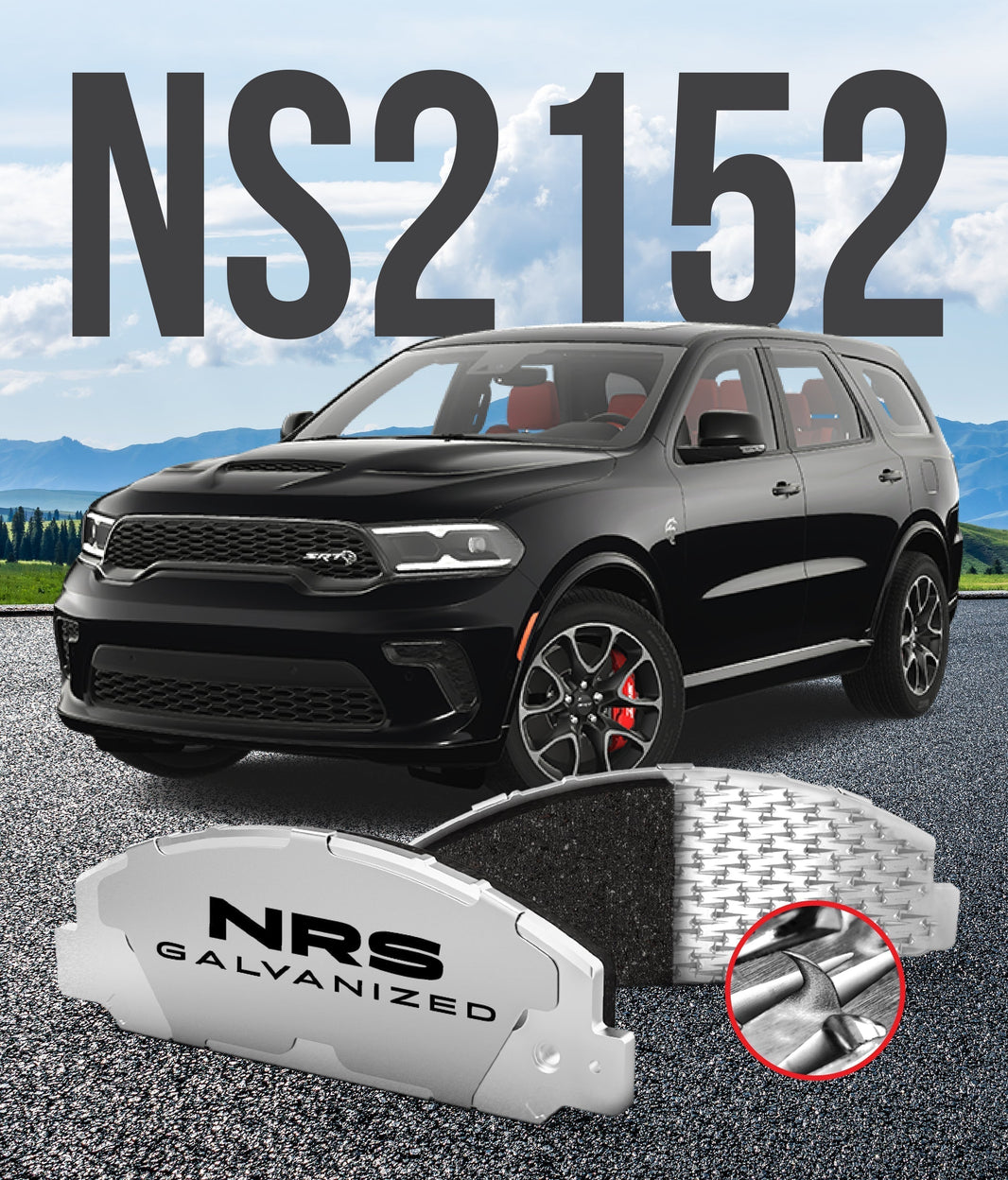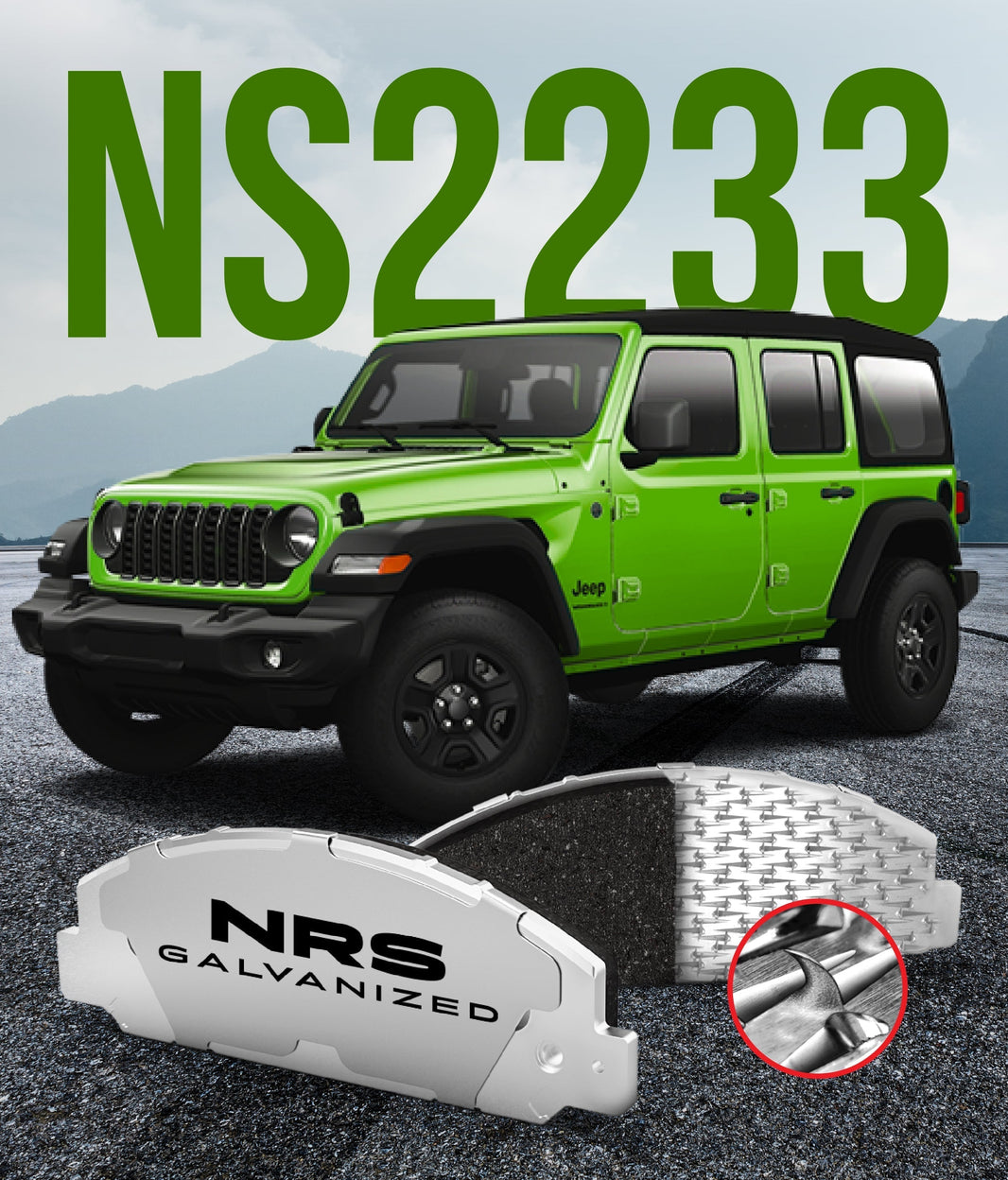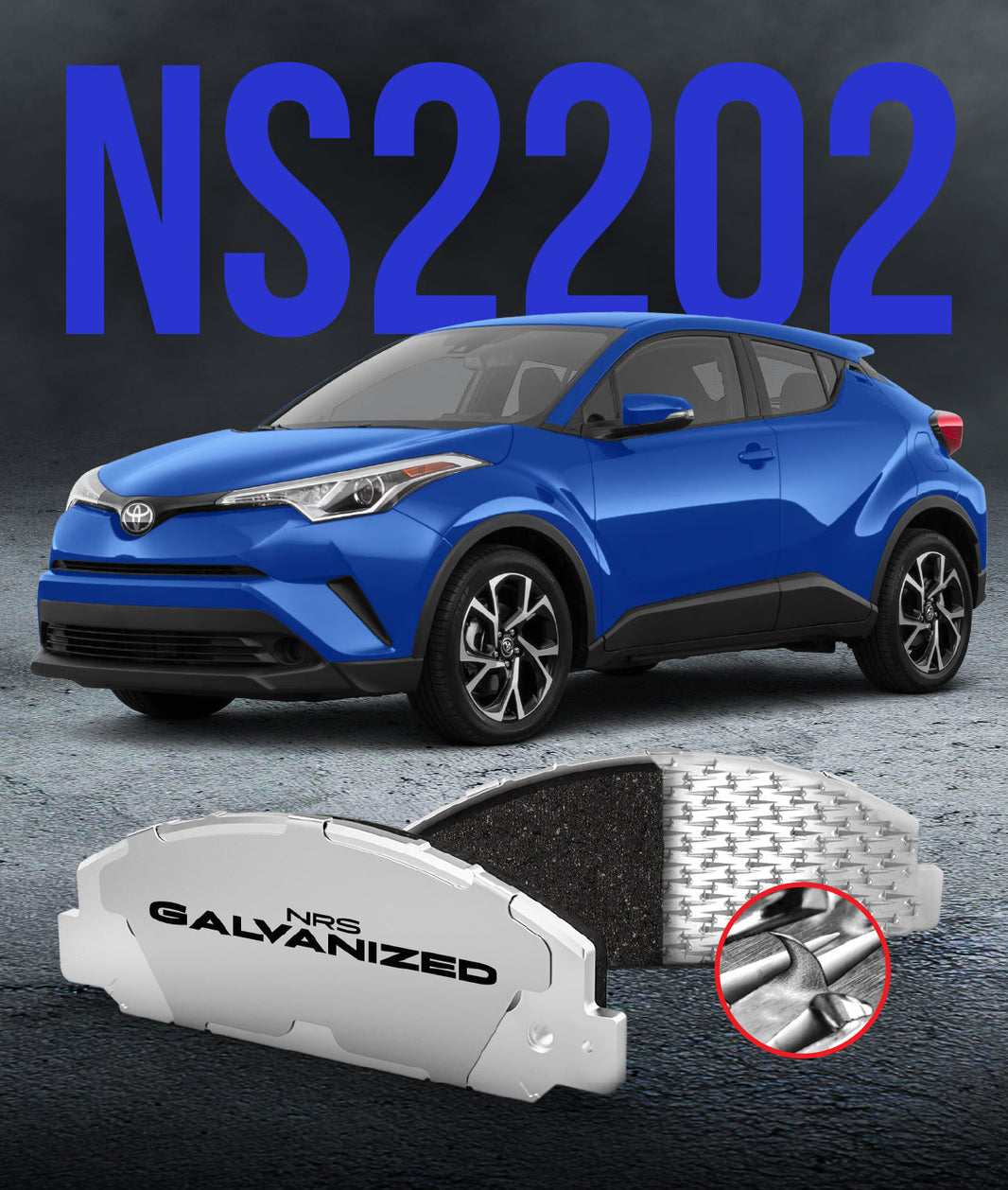
Electrification in vehicles on the roads is here to stay. Electric vehicles (EVs) offer a quieter ride, instant torque, and zero tailpipe emissions, representing a significant leap forward in automotive technology. However, this technological shift brings unique considerations for vehicle components, including the braking system. While EVs still utilize traditional friction brakes alongside regenerative braking, the way they operate places different demands on brake pads. Simply using pads designed for gasoline cars isn't always the best approach. So, what makes the ideal electric vehicle brake pads?
This article will explore the specific challenges that EV braking systems pose for conventional brake pads and demonstrate why NRS Brakes, with their galvanized construction and patented mechanical attachment, are not just compatible but specifically engineered to be the smartest, longest lasting, and safest choice for your electric vehicle but why they are the right choice. If you own an EV, understanding these differences is key to maintaining optimal performance and safety.
Regenerative Braking: The Efficiency Marvel (with a Side Effect for Friction Brakes)
One of the defining features of electric and hybrid vehicles is regenerative braking. This clever system uses the electric motor itself to slow the vehicle down, acting as a generator to recapture kinetic energy and send it back to the battery. This significantly improves energy efficiency and extends driving range, a major benefit of EV ownership.
However, this reliance on the electric motor for much of the routine slowing has a direct consequence for the traditional friction brakes (the pads and rotors). It means your EV has less use. Because the electric motor handles a large portion of the braking duty, the friction brakes are used much less frequently and often less aggressively than in a conventional gasoline powered car. While less wear on the friction material might sound like a good thing initially, this infrequent use creates a specific problem. As NRS Brakes points out, "A gasoline vehicle uses brakes frequently, causing them to heat and dissipate moisture. Hybrid and electric cars use their electric motor to slow the vehicle, resulting in less frequent use of your brakes." Which can lead to faster corrosion and possible delamination on the brake pads.
This same issue also affects cars left in storage—whether it’s an EV, a seasonal vehicle, a fleet of vehicles or a car that’s just not driven often. Inactivity invites moisture, and conventional brake pads with glued backing plates often deteriorate from the inside out.
The Problem: Why Traditional Brake Pads Struggle on EVs
This infrequent use of friction brakes is where the trouble begins for traditional brake pad designs. The lack of regular heating cycles means moisture doesn't get evaporated from the brake components as effectively. This persistent moisture, especially when combined with road salt during winters, creates a perfect environment for rust and corrosion to develop on standard painted or uncoated steel backing plates.
This isn't just a cosmetic issue. Rust on the backing plate compromises the structural integrity of the pad and, critically, attacks the adhesive layer typically used to bond the friction material. This can lead to a host of problems specifically exacerbated in the EV context:
-
Premature Failure: Rust can cause the backing plate to degrade or swell, leading to pad failure long before the friction material is worn out.
-
Delamination Risk: The weakened adhesive bond, undermined by rust, dramatically increases the risk of the friction material separating from the backing plate – a dangerous failure mode.
-
Noise: Rust buildup creates uneven surfaces, promoting the vibrations that cause annoying brake squeal, which is particularly noticeable in the otherwise quiet cabin of an EV.
-
Reduced Performance: Corroded components simply don't function as intended, potentially leading to inconsistent braking or dragging.
As the seed content warns, "aftermarket manufacturers – and even some OEMs – are pushing outdated brake pads that weren’t designed for your EV." Using pads not engineered for these conditions means you might face costly replacements sooner than expected, or worse, compromise your safety. Don't be tempted by cheap options or even standard dealer parts that haven't addressed this fundamental EV braking challenge.
The NRS Solution: Engineered Specifically for EV Braking Needs
Recognizing these unique challenges, NRS Brakes developed a solution explicitly targeted at the demands of electric and hybrid vehicles. "Only zinc plated NRS-EV brakes are specifically engineered for your EV," leveraging core NRS technologies that directly counteract the problems caused by infrequent brake use and moisture buildup.
This isn't just about putting an "EV" label on a standard pad. It involves utilizing foundational NRS innovations – galvanized steel and mechanical attachment – that inherently make the pads more resistant to the specific failure modes encountered in EV applications. NRS Brakes' conclusive research provides the proof: their design philosophy directly addresses the root causes of premature failure in this context. Let's look at the key engineering pillars.
Pillar 1: Galvanized Steel – The Unbeatable Anti Corrosion Armor
The first line of defense, and a visible difference right out of the box, is NRS Brakes' use of galvanized steel for all backing plates. Galvanization involves coating the steel with a durable layer of zinc.
This zinc coating acts as a sacrificial anode, protecting the underlying steel from rust even if scratched. This is critically important for EVs where infrequent use allows moisture to linger on brake components. The galvanized backing plate resists corrosion indefinitely, ensuring the pad's foundation remains strong and stable throughout its service life. Unlike painted plates where rust can grow and attack the adhesive bond, the galvanized surface maintains its integrity, directly preventing rust related failures and allowing the friction material to be used safely down to the last millimeter. It's the core of the "NRS Galvanized Difference" and essential for EV longevity.
Pillar 2: NRS Hooks – The Mechanical Bond That Never Fails
The second crucial element is NRS Brakes' patented mechanical attachment system, NRS Hooks. Traditional pads rely on adhesives, which, as discussed, are vulnerable to heat, shear forces, and degradation from rust – all concerns in EV applications.
NRS completely eliminates this vulnerability. "Instead of adhesives, our brake pads have galvanized hooks - called NRS™ on the backing plate surface." These hooks, hundreds of them, are physically formed into the galvanized steel plate itself. The friction material compound is then molded onto this surface, flowing around and locking permanently onto the hooks. This creates an immensely strong, physical interlock – a "mechanical retention" that is far superior to any chemical bond. As NRS guarantees, this ensures the "friction material will never delaminate," providing safer operation for the entire life of the pad. For an EV, where pads might sit unused for longer periods and then be subjected to occasional hard stops, this indestructible bond provides essential peace of mind against catastrophic failure. This PACE award winning technology is a cornerstone of NRS safety and durability.
Pillar 3: Quiet Confidence – Silencing the EV Ride with Advanced Noise Dampening
Electric vehicles are prized for their exceptionally quiet operation. This serene driving experience makes any unusual noise, particularly brake squeal or vibration, much more noticeable and disruptive to the vehicle's occupants. NRS Brakes meticulously addresses this critical aspect of EV performance through a multi-faceted approach to noise, vibration, and harshness (NVH) control.
Beyond these core features, NRS Brakes incorporates an additional, innovative solution: the NRS Piston Cushion. This patented technology is specifically designed to further dampen brake noise. The piston cushion is an insert that acts at a critical NVH interface – the point of contact between the caliper piston and the brake pad. Its role is to absorb piston vibrations before they can translate into audible noise. According to NRS Brakes, this piston cushion can eliminate noisy stops.
The piston cushion also offers the added benefit of acting as a heat shield. By minimizing heat transfer from the pad and rotor to the caliper and brake fluid, it helps maintain consistent braking performance and can further contribute to reducing the likelihood of noise generated by excessive heat.
Combined, the secure mechanical attachment, the stability of the galvanized plate, dedicated noise suppression shims (included with all galvanized NRS brake pads), and the targeted vibration absorption of the NRS Piston Cushion create a synergistic effect. This comprehensive strategy results in exceptionally quiet braking performance that perfectly complements the refined and silent driving experience EV owners expect, ensuring that the only sounds they enjoy are those of their journey, not their brakes.
The Environmental Synergy: Eco Friendly EVs Deserve Eco Friendly Brakes
Owning an EV often reflects a conscious choice towards environmental responsibility. NRS Brakes believes that commitment should extend to replacement parts, including brake pads.
As NRS Brakes highlights, "Your EV is Eco-Friendly, Why Not Your Brake Pads?" NRS has always crafted premium brake pads to meet the highest possible standards for environmental safety and sustainability. NRS brake pads are paint FREE, eliminating the release of potentially harmful VOCs and lead associated with painted backing plates. Furthermore, they are 100% copper FREE, meeting and exceeding the strict environmental regulations in California and Washington (LEVEL A, B, and N) well ahead of mandates. Copper runoff from brake dust is toxic to aquatic life, and eliminating it is a significant environmental benefit. NRS pads also feature the LeafMark™ symbol, signifying their commitment to these standards, and the entire pad, including the galvanized steel.. Choosing NRS means maintaining your EV's green credentials, unlike traditional pads whose debris can pollute air, water, and soil with rust particles, copper, and paint chemicals.
Optimal Performance and Fit: The Complete Package for Your EV
While addressing the specific challenges of EV braking – rust, delamination, noise – NRS Brakes ensures that overall braking performance is not compromised. In fact, it's often enhanced.
The combination of high quality friction materials, a stable platform, and secure attachment leads to optimal performance, including shorter stopping distances and a consistent, confident pedal feel. NRS pads also adhere to strict OEM Fit Tolerances, ensuring they install perfectly ("Fits right out of the box") and function correctly within your EV's specific braking system. This eliminates issues related to poor fitment that can plague some lesser aftermarket brands.
We at NRS Brakes recognized early on that the unique braking dynamics of electric and hybrid vehicles demanded a new standard for brake pad engineering. We didn't just adapt existing technology; we designed solutions like our galvanized steel backing plates and patented NRS Hooks mechanical attachment specifically to overcome the challenges of infrequent use and moisture buildup inherent in regenerative braking systems. Our commitment ensures that EV owners receive the Best Brake Pads – components that offer superior rust resistance, guaranteed prevention of delamination, quiet operation, environmental responsibility, and optimal performance. Don't settle for outdated technology or compromise the safety and longevity of your EV's braking system. Make the smart choice – "Go Galvanized" with NRS Brakes.




